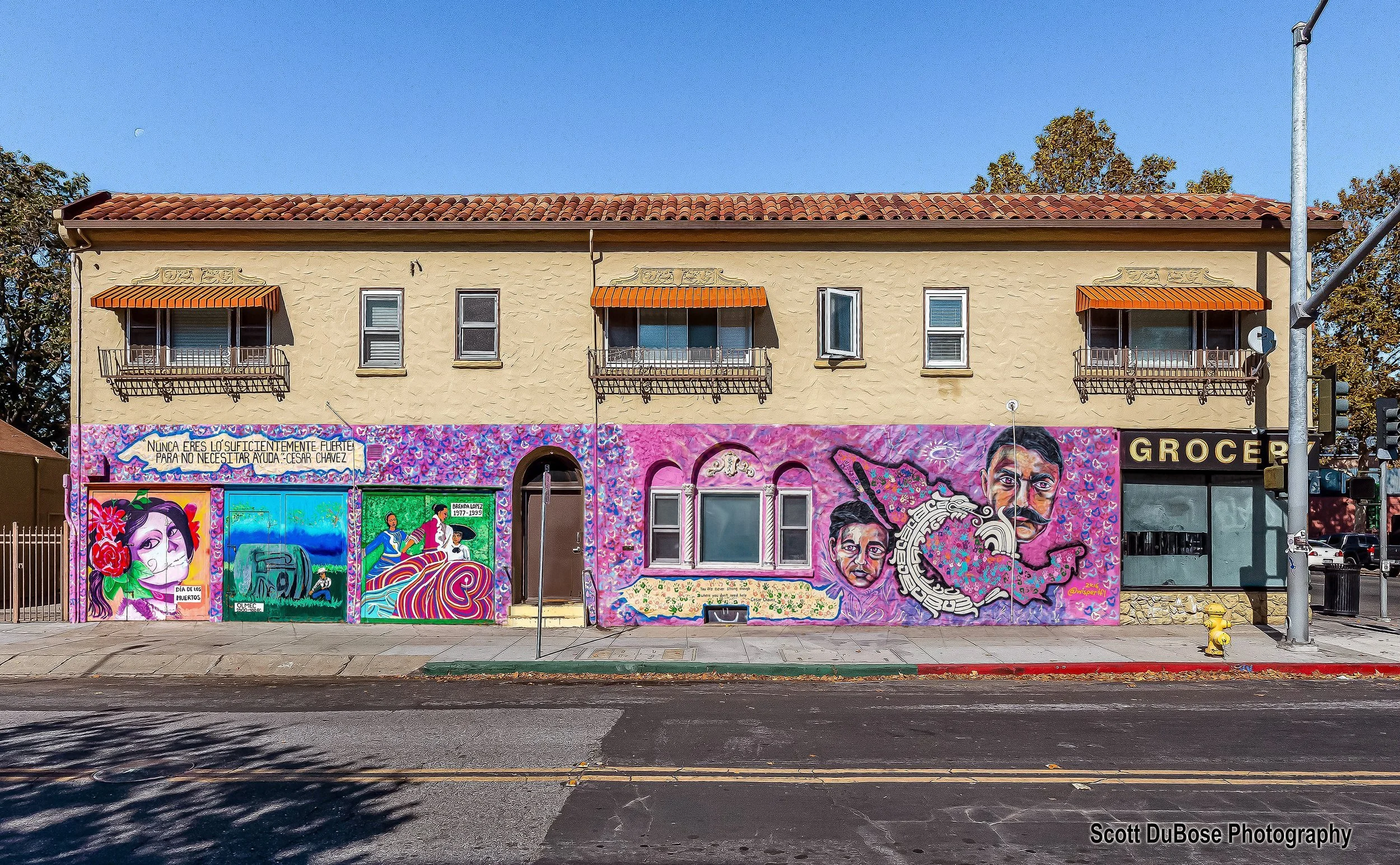Photo by Scott DuBose
In a recent article for The Atlantic, Brooklyner Xochitl Gonzalez says that “the sound of gentrification is quiet.” She tells of growing up in a loud and proud Puerto Rican neighborhood, then being shushed when she went away to an Ivy League college. Her genteel classmates were more comfortable in silence, and they valued their comfort over Gonzalez’s joy. Returning home after college, she found to her dismay that Brooklyn’s soundscape was becoming more like college than the neighborhood she had left. Gentrification was devaluing joyful volume and overpricing peaceful quiet.
If the sound of gentrification is quiet, perhaps the sight is a blank wall. One of the most prominent murals in my San Jose neighborhood, pictured above, is a colorful homage to Mexican heritage. It includes a Dia de los Muertos figure, a ballet folklorico dancer, and the faces of Cesar Chavez and Pancho Villa. Chavez was a labor leader who grew up in a nearby neighborhood. Villa was a revolutionary fighter for Mexican independence. A community group helped the muralist paint the piece about six years ago, and the neighborhood has embraced it. “The artwork literally bears the mark of the community—local children dipped their hands in paint and pressed them along the mural.”
The trouble with murals, though, is that they are also walls. An outside landlord recently bought the building and announced his intention to erase the mural. “He wants to fill the building with tech workers and he doesn’t want them turned off by artwork he thinks could be interpreted as gang-related.” Behind the tone-deaf insensitivity of that statement lies the same valuation Gonzalez faces in Brooklyn: newcomers’ peace is more important than locals’ joy.
I would be hard-pressed to imagine a better illustration of gentrification than white-washing a mural of local cultural heroes to make things comfortable for rich relocators. But the examples of Chavez and Villa surely encourage the locals to resist. Neighbors have rallied and agitated, and leaders have talked to the new owner. So far, the mural is untouched. We’ll see how long it remains.
The quotation above the left side of the mural comes from Chavez. “No one is so strong that they don’t need help” is my rough translation from the Spanish. Or, to paraphrase and interpret, "everyone needs community." I hope that, if tech workers do move into the building, the mural will still be there to remind them that they need the community around them.
Andy co-leads the Servant Partners site in San Jose, California and is Editor of SP Press.


